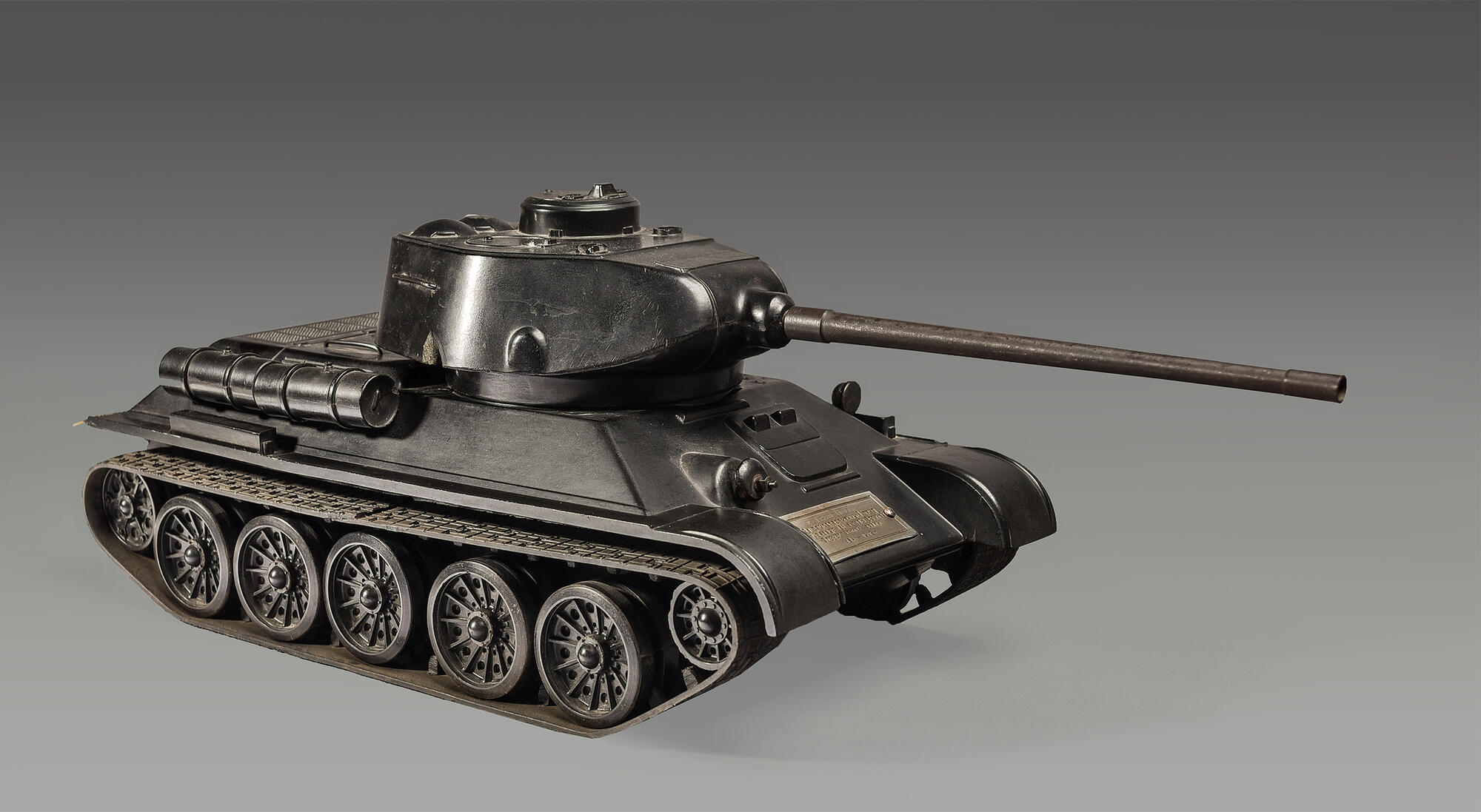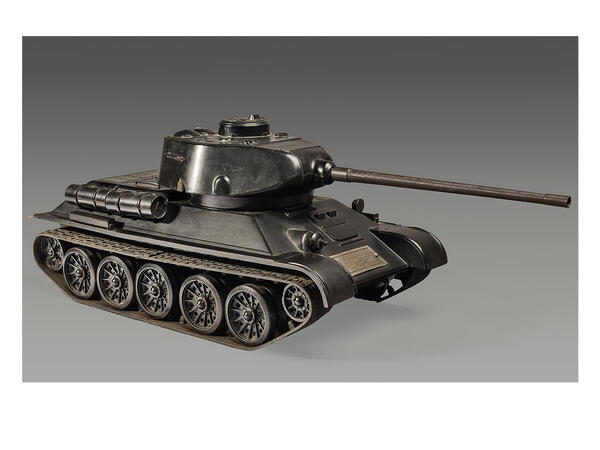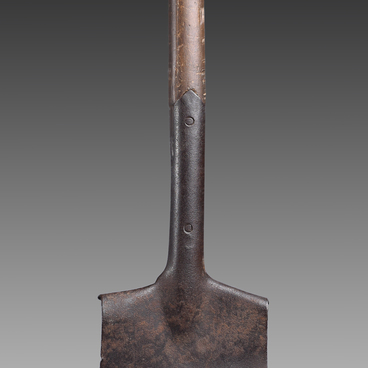The exhibition features a model of the famous Soviet tank T-34-85. In the period from 1942 to 1947, it was the main tank of the Workers' and Peasants' Red Army and the Armed Forces of the USSR.
The most massive tank of the Second World War and the post-war period was developed by the design bureau of the tank department of the Kharkov plant No. 183 under the leadership of Mikhail Koshkin. Its design included the latest highly efficient diesel engine V-2. The medium thick-armored T-34 inherited from the light high-speed BT tank a high power density, that is, the ratio of engine performance to combat weight. This characteristic ensured the absolute superiority of the T-34 over enemy vehicles in cross-country ability, maneuverability and mobility throughout the war.
For the first time in the practice of world tank building, a long-barreled 76 mm cannon was installed on a medium tank. The L-11 gun of the 1939 model significantly surpassed the initial speed of an armor-piercing projectile (635 meters per second) of all foreign tank artillery systems that existed in those years. And in March 1941, the T-34 was equipped with an F-34 cannon with a caliber of 76.2 mm. The muzzle velocity of the armor-piercing projectile fired from it was 662 meters per second. It could penetrate 60mm armor from a distance of 1000 meters. This modernized model was assigned the number T-34-76.
The high modernization potential of the design made it possible to constantly improve the combat qualities of the tank, as well as to increase the pace of its production throughout the war. From 1942 up to 1945, the main large-scale production of the T-34 was deployed at machine-building plants in the Urals and Siberia, and continued there in the post-war years.
The T-34 tank had a huge impact on the outcome of WWII and on the further development of world tank building. The German troops did not expect that the production of such powerful equipment would be established in the USSR. Due to the superior combat qualities of the T-34, many military experts recognize it as the best tank of the Second World War. Experts note that during its creation, Soviet designers managed to find the optimal balance between the main combat, tactical, protective, operational, running and technological characteristics.
The most massive tank of the Second World War and the post-war period was developed by the design bureau of the tank department of the Kharkov plant No. 183 under the leadership of Mikhail Koshkin. Its design included the latest highly efficient diesel engine V-2. The medium thick-armored T-34 inherited from the light high-speed BT tank a high power density, that is, the ratio of engine performance to combat weight. This characteristic ensured the absolute superiority of the T-34 over enemy vehicles in cross-country ability, maneuverability and mobility throughout the war.
For the first time in the practice of world tank building, a long-barreled 76 mm cannon was installed on a medium tank. The L-11 gun of the 1939 model significantly surpassed the initial speed of an armor-piercing projectile (635 meters per second) of all foreign tank artillery systems that existed in those years. And in March 1941, the T-34 was equipped with an F-34 cannon with a caliber of 76.2 mm. The muzzle velocity of the armor-piercing projectile fired from it was 662 meters per second. It could penetrate 60mm armor from a distance of 1000 meters. This modernized model was assigned the number T-34-76.
The high modernization potential of the design made it possible to constantly improve the combat qualities of the tank, as well as to increase the pace of its production throughout the war. From 1942 up to 1945, the main large-scale production of the T-34 was deployed at machine-building plants in the Urals and Siberia, and continued there in the post-war years.
The T-34 tank had a huge impact on the outcome of WWII and on the further development of world tank building. The German troops did not expect that the production of such powerful equipment would be established in the USSR. Due to the superior combat qualities of the T-34, many military experts recognize it as the best tank of the Second World War. Experts note that during its creation, Soviet designers managed to find the optimal balance between the main combat, tactical, protective, operational, running and technological characteristics.



